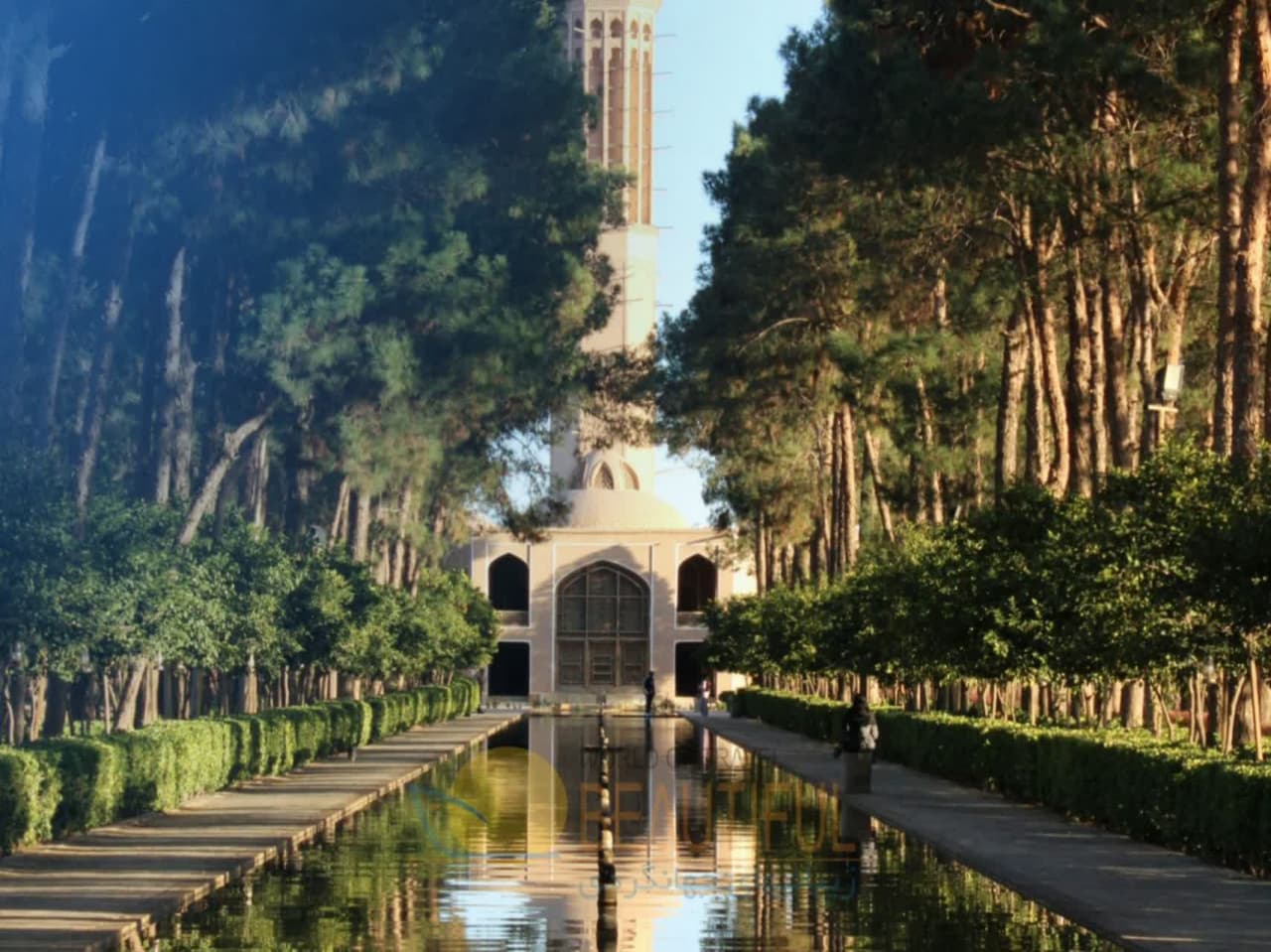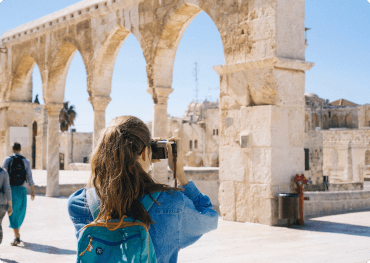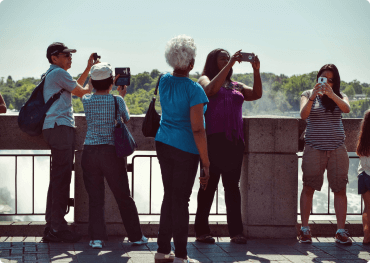
CL 520
Package Details
Day 1: Flight from your home country to Tehran Capital of Iran
You prepare yourself for a fabulous trip to Great Persia in an economic and intensive trip
Arrival to Tehran, after custom formality, meet and assist at airport with driver guide and transfer to the Hotel.
O/N: Tehran
Day 2: Tehran
After breakfast, half day sightseeing, visiting Tehran: Golestan Palace, Grand Baazar and Monastery of Safi Ali Shah, an expert guide will help to translate between a leader in Monastery and tourist.
O/N: Tehran
The Golestan Palace is the former royal Qajar complex in Iran's capital city, Tehran.
The oldest of the historic monuments in Tehran, and of world heritage status, the Golestan Palace belongs to a group of royal buildings that were once enclosed within the mud-thatched walls of Tehran’s Historic Arg (citadel). It is a masterpiece of beautiful garden and buildings consist of collection of Iranian crafts and European presents from 18th and 19th century.
Golestan Palace Complex consists of 17 structures including palaces, museums, and halls. Almost all of this complex was built during the 200 years ruling of Qajarian kings. These palaces were used for many different occasions such as coronation and other important celebrations. It also consists of three main archives as the royal photographic archive collection 'Album khane', the royal library of manuscripts 'Ketabkhane Nosakhe khati' and the archive of documents 'Markaze asnad'.
The Grand Bazaar is an old historical market in Tehran, the capital of Iran.Located at the Arg Square in Southern Tehran, it is split into several corridors over 10 km in length, each specializing in different types of goods, and has several entrances, with the main being the entrance of Sabze Meydan.
In addition to shops, the Grand Bazaar of Tehran has contained banks, mosques and guest houses.
Monastery of Safi Ali Shah
Haj Mirza Hassan Isfahani, known as Safi Ali Shah (born: Tuesday 3rd Sha'ban 1251 (lunar) equal to 3 December 1214 in Isfahan, died Friday, 24 November 1316 (AH) against the Persian date Ordibehesht 15 1278 in Tehran), the most famous of the elders and leaders of the Sufis in the late thirteenth and early fourteenth century AD, including scholars and scholars Rfa’ Ni'matullāhī was. He was aware that distinguished poets and mystic, Munawar Ali Shah Shirazi first among the disciples, was Ni'matullāhī pole, but then he moved to Tehran on his behalf and he stayed in the city, directly claim their polarity and Safi Ali Shah dynasty founded. At the age of 21, and went to Shiraz in 1272 AH Mirza Koochak Rahmat Ali Shah to his head and one of his disciples, and the so-called dervishes, was on the verge of repentance and suggestion of His Holiness Musharraf. He also earlier, in addition to Shiraz, Kerman and Yazd stay a while and then went to India and stayed for several years in the country. He then went to Hijaz by India as he himself wrote in his biography, on this trip I met with most of the leaders of Iran and India and some were enjoys. According to the Indian elite, he wrote Asrar, the Masnavi divan in the mysteries of testimony and adapting to conduct Allhast, pay. However, due to the maturity of some elite lyrics Asrar, have hesitated in writing this book in the young Sfylyshah, and some have written their middle years and at the time he lived in Kerman, according to the command of his mentor, Rahmat Ali Shah, Asrar elite authorship of the book began and it is done in India, where it helps to have one of Aradtmndansh a native of Mumbai, was published. In the year 1280 AH, his way of India to visit Baitullah was determined, and on his return, again in India stopped and the presence of mystics and there's elders. Then in 1285 he and AH, to resolve the Holy Land Razavi, the Holy Shrines, returned to Shiraz and Yazd, and from there to Tehran.
In the year 1294 AH, one of the disciples properties Safi Ali Shah, a plot of land with an area of two thousand cubits [in the neighborhood Shah Abad, Tehran, dedicated to him. In the same year, a large monastery in Tehran [in the land] for the. Some of the monastery's founder, Sayf al-Dawla, and the brother of Prince al-Dawla also considered. The famous street in Safi Ali Shah and monastery, the monastery of eastern and northern sides Safi Ali Shah passes.
Safi Ali Shah on Wednesday, 24 Dhu al-Hijjah 1316 AH, and at age 65, in his house at the end of his life, had been in his home, died and was buried in the monastery.
Later, Ms. Shams Alzhy vitality Isfahani , the only son of Safi Ali Shah, the monastery was consecrated and then, disciples and devotees Safi Ali Shah, on Sundays in the evening at the monastery gather up, the bond of brotherhood and heart and his spiritual connection and encouraging.
Day 3: Tehran - Yazd
Morning after breakfast in hotel, day is free.
At evening transfer to train station, to travel to Yazd (624 km).
O/N: in train coach
Day 4: Yazd
Early morning arrival to Yazd, transfer to hotel and check in to the hotel according to the usual procedure at 1300PM (Breakfast in a traditional coffee shop in Yazd)
Afternoon visit Yazd: Fire temple, Amir Chakhmaqh, Water Museum, Jameh Mosque.
O/N: Yazd
The Yazd Atash Behram, also known as Yazd Atash Kadeh), is a temple in Yazd, to the west of Shiraz in Iran. It was built in 1934 and enshrines the Atash Bahram, meaning “Victorious Fire”, dated to 470 AD. It is one of the nine Atash Behrams, the only one of the highest grade fire in Iran where Zoroastrians have practiced their religion since 400 BC; the other eight Atash Behrams are in India. According to Aga Rustam Noshiravan Belivani, of Sharifabad, the Anjuman-i Násirí (elected Zoroastrian officials) opened the Yazd Atash Behram in the 1960s to non-Zoroastrian visitors.
The temple is located in Yazd, to the west of Shiraz, in the desert province of Yazda, where Zoroastrians have practiced their religion since about 400 BC. It is located on the Ayatullah Taleghani Avenue and is 6 kilometres (3.7 mi) away from Yazd Airport.
The highest grade of fire temples were first constructed in the Sasanian Empire for the reverence of fire, which is the manifestation of Ahura Mazda in the Zoroastrian religion. According to the Zoroastrian religion, this type of fire is consecrated by sixteen different sources, including the fire created by a lightning bolt.
Amir Chakhmaq Maidan Square in the city of Yazd is. Yazd Amir Chakhmaq of the market, relying, a mosque and two cistern dating back to the Timurid period is. Relying Amir Flint in 1330 and the mosque, Amir Flint in 1341 in the national index Iran were registered. Amyrchqmaq field, one of the most remarkable collections of historical and tourism is the city of Yazd.
Amyrjlalaldyn Chqmaq , captains and rulers of the Timurid Shahrukh in solar 8th century when the ruling was Yazd, a set of lean , square, public baths , caravanserais , monasteries , Qnatkhanh and cold water and in so doing promote the buildup of Yazd Fatima Khatun, wife, helped him.
Yazd Water Museum: The museum is the perfect place for recognizing historical buildings and monuments related to the water. The museum is located in the north of the city of Yazd Amir Chqmaq. The museum subterranean drilling equipment, express and equipment to measure the volume of water in the canals of lighting, water and devoted documents dealing with old letters, manuals and documents mirab water distribution, water storage containers and many appliances and other valuable objects are kept. The museum is set up in the historic home Hatter.
The Jāmeh Mosque of Yazd is the grand, congregational mosque (Jāmeh) of Yazd city, within the Yazd Province of Iran. The mosque is depicted on the obverse of the Iranian 200 rials banknote.
The 12th-century mosque is still in use today. It was first built under Ala'oddoleh Garshasb of the Al-e Bouyeh dynasty. The mosque was largely rebuilt between 1324 and 1365, and is one of the outstanding 14th century buildings of Iran. According to the historians, the mosque was constructed in the site of the Sassanid fire temple and Ala'oddoleh Garshasb commenced building the charming mosque. The previous mosque was constructed by order of Ala'oddoleh Kalanjar in 6th century A.H., however the main construction of the present building was done by order of "Seyyed Rokn Al-din Mohammad QAZI".
Day 5: Yazd
After breakfast, drive to Fahraj Desert (30 km). For walking in desert sands and camel riding.
Evening return to Yazd.
O/N: Yazd.
Fahraj Desert located at a distance of 5 km from city Fahraj due to its beautiful pristine area of tissue.
People who have experienced even once desert trekking, hiking pleasure stranded on the sand, watching the countless stars in the sky and the silence of the desert generous do not never forget it.
Day 6: Yazd – Shiraz
Morning After breakfast, check out the hotel and transfer to Bus station to travel with public bus to Shiraz (438 km).
Afternoon arrival to Shiraz, transfer to the hotel and check in.
O/N: Shiraz
Day 7: Shiraz
Morning after breakfast, our guide will meet to go to visit Persepolis & Naghshe Rostam and return to the city in afternoon.
O/N: Shiraz
Persepolis the name of one of the ancient cities of Iran that joined over the years, the capital’s stately and ceremonial monarchy at the time of the Achaemenid Empire was. In this ancient city called Persepolis palace that during the reign of Darius, Xerxes and Artaxerxes was built and was built for about 200 years. On the first day of the New Year, many groups from different countries representing Satrapyha or governments gathered in Persepolis with diverse took offerings and gifts were presented to the king.
Persepolis in 518 BCE as the new capital of the Achaemenid the gamers began. Founder of Persepolis, Darius was, of course, after his son Xerxes and his grandson Artaxerxes I to extend this series to expand it added. Many existing knowledge about the history and culture of the Achaemenid stone inscriptions and Flznvshthhayy is available for the palaces and on the walls and the tablet is engraved Sumner has estimated that the plain of Persepolis which contains 39 residential camp was in the Achaemenid period 43, 600 people had. Historians believe that Alexander the Macedonian commander Greek in 330 BC, invaded Iran and burned Persepolis and probably a large part of the books, Achaemenid art and culture destroyed by it. However, the ruins of this place is still up and archeology of its ruins signs of fire and rush to acknowledge it.
This place since 1979, one of Iran's record on the UNESCO World Heritage is.
Naqsh-e Rustam name of the ancient collection Zangiabad village located in the northern city of Shiraz in Fars province of Iran , which is 6 kilometers from Persepolis is located. Yadmanhayy the archaeological site of the Elamite , Achaemenid and Sassanid in its place and has around 1200 BC to 625 AD was the focus of attention because the tomb four kings Achaemenid, Sassanian reliefs of a number of major events, building the Kaaba of Zoroaster and Vyranshdhay relief from the Elamite era in this place and in the Sassanid era, Naqsh-e Rustam area of religious and national importance have been.
In the past, this place was Dogonbadan Segonbad or among the people of the region were caught by the names of the mountain, the mountain was also called Nfsht pool or mountains after the Iranians and possibly the name of Naqsh-e Rustam between Rostam , the hero of Shahnameh and communicate the Sassanid kings were Sngngarhhay It was to this place.The oldest role in Naqsh-e Rustam is the Elamite period and the king and queen of the gods and goddesses were portrayed, but later in the Sassanid era, Bahram II parts of it wiped and his role and his courtiers erected in its place. Kaaba of Zoroaster and Brjmannd in the Mhvthast stone building that was built during the Achaemenid period is likely to be unclear and its application is based on three corners of the building has two inscriptions of Shapur I and Kartir written that historically are of great value.
Four Tomb dungeon in the bosom of the Mountain of Mercy have been dug that belonged to Darius the Great , Xerxes , Artaxerxes I , and Darius II that all of them have the same properties.
Ardashir the first one who in this area, Sngngarhay shaved and Tajgyryash scene of Ahura Mazda recorded. He also Tajgzaryshan Sassanid kings scenes or descriptions of battles and Aftkhartshan on the breast of the mountain. That Artaxerxes and his son Shapur II Nqshbrjsthhayy counterparts in the Achaemenid reliefs in Naqsh-e Rustam shaved, probably in imitation of the past have been the political and cultural sequences.
Day 8: Shiraz
Morning after breakfast, our guide will meet to go to visit Samikan temple in Shiraz & tomb of Hafez.
O/N: Shiraz
Samikan temple Shiraz:
The temple, about 140 km south of Shiraz on the roadside of the Sassanid period. Fire temple belonging to the Sassanid era.
The Tomb of Hafez and its associated memorial hall, the Hāfezieh, are two memorial structures erected in the northern edge of Shiraz, Iran, in memory of the celebrated Persian poet Hafez. The open pavilion structures are situated in the Musalla Gardens on the north bank of a seasonal river and house the marble tomb of Hafez.
The present buildings, built in 1935 and designed by the French architect and archaeologist André Godard, are at the site of previous structures, the best-known of which was built in 1773.
The tomb, its gardens, and the surrounding memorials to other great figures are a focus of tourism in Shiraz.
Day 9: Shiraz - Isfahan
Morning after breakfast, check out the hotel and transfer to Bus station to travel to Isfahan (483 km).
Afternoon arrival to Isfahan, transfer to the hotel and check in.
O/N: Isfahan.
Day 10: Isfahan
Morning after breakfast, half day visit to Isfahan: Naqsh-e Jahan Square Complex.
O/N: Isfahan
Naqsh-e Jahan Square known as Imam Square, formerly known as Shah Square, is a square situated at the center of Isfahan city, Iran. Constructed between 1598 and 1629, it is now an important historical site, and one of UNESCO's World Heritage Sites. It is 160 meters (520 ft.) wide by 560 meters (1,840 ft) long (an area of 89,600 square meters (964,000 sq. ft.)). The square is surrounded by buildings from the Safavid era. The Shah Mosque is situated on the south side of this square. On the west side is the Ali Qapu Palace. Sheikh Lotf Allah Mosque is situated on the eastern side of this square and at the northern side Keisaria gate opens into the Isfahan Grand Bazaar.
Ali Qapu is a grand palace in Isfahan, Iran. It is located on the western side of the Naqsh e Jahan Square, opposite to Sheikh Lotfollah Mosque, and had been originally designed as a vast portal. It is forty-eight meters high and there are seven floors, each accessible by a difficult spiral staircase. In the sixth floor, Music Hall, deep circular niches are found in the walls, having not only aesthetic value, but also acoustic.
Fresco from the portico of the palace, depicting a Persian woman.
The name Ali Qapu, from Arabic "Ālī" (meaning "imperial" or "great"), and Turkic "Qāpū" (meaning "gate"), was given to this place as it was right at the entrance to the Safavid palaces which stretched from the Naqsh e Jahan Square to the Chahar Baq Boulevard. The building, another wonderful Safavid edifice, was built by decree of Shah Abbas I in the early seventeenth century. It was here that the great monarch used to entertain noble visitors, and foreign ambassadors. Shah Abbas, here for the first time, celebrated the Nowruz (Iranian New Year) of 1006 AH / 1597 C E.
Ali Qapu is rich in naturalistic wall paintings by Reza Abbasi, the court painter of Shah Abbas I, and his pupils. There are floral, animal, and bird motifs in his works. The highly ornamented doors and windows of the palace have almost all been pillaged at times of social anarchy. Only one window on the third floor has escaped the ravages of time. Ali Qapu was repaired and restored substantially during the reign of Shah Sultan Hussein, the last Safavid ruler, but fell into a dreadful state of dilapidation again during the short reign of invading Afghans. Under the reign of Nasir Ol Din Shah e Qajar (1848–96), the Safavid cornices and floral tiles above the portal were replaced by tiles bearing inscriptions.
Sheikh Lotfollah Mosque is one of the architectural masterpieces of Safavid Iranian architecture, standing on the eastern side of Naghsh-i Jahan Square, Isfahan, Iran.
Construction of the mosque started in 1603 and was finished in 1619. It was built by the chief architect Shaykh Bahai, during the reign of Shah Abbas I of the Safavid dynasty.
The Bazaar of Isfahan or Isfahan Bazaar is a historical market in Isfahan, Iran, one of the oldest and largest bazaars in the Middle East, dating back to the 17th century. The bazaar is a vaulted two-kilometre street linking the old city with the new.
The Bazaar of Isfahan is located in downtown old Isfahan, Iran, in the northern section of the Naqsh-e Jahan Square. The main entrance called Qeisarieh and you can walk all along to the Friday mosque Jameh Mosque the oldest mosque in Isfahan, and one of the oldest in Iran.
Before you enter the Grand Bazaar, if you look back you will see the magnificent view of the square, which is one of the biggest squares in the entire world. All around the square are bazaars full of magnificent Persian handicrafts.
Day 11: Isfahan
Half day tour: Shaking Minarets & Fire temple
O/N: Isfahan
The Monar Jonban (Shaking Minarets), or Menar-e-jomban, is a monument located in Isfahan, in central Iran. Construction began in the 14th century to cover the grave of Amu Abdollah Soqla. Its notable feature is that if one of the minarets is shaken, the other minaret will shake as well.
Fire temple: Sassanid Zoroastrian fire temple on the top of the mountain at 8 km West of fire and within 2 km after Monarjonban on the north side of the highway to Najaf Abad is located.
Day 12: Isfahan
Full day in free.
O/N: Isfahan
Day 13: Isfahan –-Tehran
Morning after breakfast, check out the hotel to go to bus station and travel to Tehran by bus (450 km).
Arrival to Tehran in afternoon, check in to the hotel.
O/N: Tehran
Day 14: Departure
Check out the hotel and transfer to the airport for departure flight back to your home country
See you soon
Details
Pellentesque accumsan magna in augue sagittis, non fringilla eros molestie. Sed feugiat mi nec ex vehicula, nec vestibulum orci semper. Class aptent taciti sociosqu ad litora torquent per conubia nostra, per inceptos himenaeos. Donec tristique commodo fringilla. Duis aliquet varius mauris eget rutrum. Nullam sit amet justo consequat, bibendum orci in, convallis enim. Proin convallis neque viverra finibus cursus. Mauris lacinia lacinia erat in finibus.
Pellentesque accumsan magna in augue sagittis, non fringilla eros molestie. Sed feugiat mi nec ex vehicula, nec vestibulum orci semper. Class aptent taciti sociosqu ad litora torquent per conubia nostra, per inceptos himenaeos. Donec tristique commodo fringilla.
- Specilaized Bilingual Guide
- Private Transport
- Entrance Fees
- Box Lunch,Water,Dinner and Snacks
Pellentesque accumsan magna in augue sagittis, non fringilla eros molestie. Sed feugiat mi nec ex vehicula, nec vestibulum orci semper. Class aptent taciti sociosqu ad litora torquent per conubia nostra, per inceptos himenaeos. Donec tristique commodo fringilla.
- Specilaized Bilingual Guide
- Private Transport
- Entrance Fees
- Box Lunch,Water,Dinner and Snacks
Pellentesque accumsan magna in augue sagittis, non fringilla eros molestie. Sed feugiat mi nec ex vehicula, nec vestibulum orci semper. Class aptent taciti sociosqu ad litora torquent per conubia nostra, per inceptos himenaeos. Donec tristique commodo fringilla.
- Specilaized Bilingual Guide
- Private Transport
- Entrance Fees
- Box Lunch,Water,Dinner and Snacks
Pellentesque accumsan magna in augue sagittis, non fringilla eros molestie. Sed feugiat mi nec ex vehicula, nec vestibulum orci semper. Class aptent taciti sociosqu ad litora torquent per conubia nostra, per inceptos himenaeos. Donec tristique commodo fringilla.
- Specilaized Bilingual Guide
- Private Transport
- Entrance Fees
- Box Lunch,Water,Dinner and Snacks
Pellentesque accumsan magna in augue sagittis, non fringilla eros molestie. Sed feugiat mi nec ex vehicula, nec vestibulum orci semper. Class aptent taciti sociosqu ad litora torquent per conubia nostra, per inceptos himenaeos. Donec tristique commodo fringilla.
- Specilaized Bilingual Guide
- Private Transport
- Entrance Fees
- Box Lunch,Water,Dinner and Snacks






















